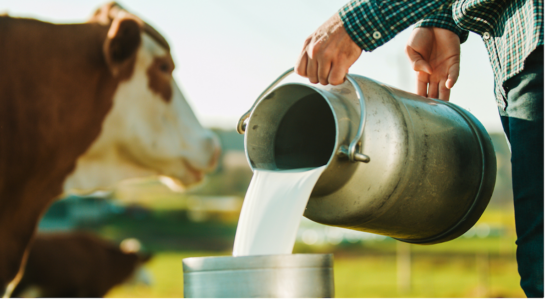Florida health officials have named the dairy that has been implicated in an outbreak from raw milk.
Investigators from the Florida Department of Health have traced the outbreak to Keely Farms Dairy in New Smyrna Beach, FL. As of Aug. 7, there have been 21 patients identified, including six children under the age of 10, with seven hospitalizations linked to consumption of raw milk from this farm. Severe complications have been reported in at least two patients.
The patients are infected with E. coli and Campylobacter. The first patient was identified in January.
“Sanitation practices in this farm are of concern due to the number of cases,” according to the state health department.
“The Florida Department of Health will continue working with Keely Farms Dairy to ensure that effective sanitation practices are implemented consistently across every batch.”
The dairy’s owners deny any problems and issued the following statement on social media:
“Keely Farms Dairy has not been informed of any immediate investigation by the Florida Department of Health and will reach out to their agency. We were not contacted by the Department of Health prior to or regarding their statement this morning (Aug. 7). The Florida Department of Health has not informed Keely Farms of any investigation or administrative action. The Department of Health has not indicated to Keely Farms that it committed any wrongdoing, so its press release has blindsided us.”
The health department first reported its investigation into the outbreak on Aug. 4. At that time the department did not name Keely Farms as the responsible dairy.
In Florida, raw milk can only be sold for non-human consumption as pet or animal food, which limits oversight of sanitary practices. Containers must have a label clearly stating that the raw milk is for animal consumption only.
“Floridians should be aware of potential risks associated with consumption, which may vary depending on the source of milk. The producer’s handling of raw milk and milking procedures are vital in prevention of contamination,” according to the Florida Department of Health. “ Raw milk can contain disease-causing bacteria, such as Campylobacter, E. coli, Listeria, Salmonella as well as viruses. These bacteria can cause gastrointestinal illness, including diarrhea, vomiting, and stomach cramps.”
Raw milk, sometimes referred to as “fresh milk” has not been heated to kill pathogens. The heating process, called pasteurization, takes only a few seconds. The Food and Drug Administration and the USDA advise against drinking raw milk or consuming products made with raw milk. State departments of agriculture and health also warn of the dangers of raw milk.
About E. coli infections
Food contaminated with E. coli does not necessarily look, smell or taste bad.
Anyone who has consumed any raw milk and developed symptoms of E. coli infection should seek medical attention and tell their doctor about their possible exposure to the bacteria. Specific tests are required to diagnose the infections, which can mimic other illnesses.
The symptoms of E. coli infections vary for each person but often include severe stomach cramps and diarrhea, which is often bloody. Some patients may also have a fever. Most patients recover within five to seven days. Others can develop severe or life-threatening symptoms and complications.
About 5 to 10 percent of those diagnosed with E. coli infections develop a potentially life-threatening kidney failure complication, known as a hemolytic uremic syndrome (HUS). Symptoms of HUS include fever, abdominal pain, feeling very tired, decreased frequency of urination, small unexplained bruises or bleeding, and pallor.
Some people with HUS recover within a few weeks, but others suffer permanent injuries or death. This condition can occur among people of any age but is most common in children younger than five years old because of their immature immune systems, older adults because of deteriorating immune systems, and people with compromised immune systems such as cancer patients.
People who experience HUS symptoms should immediately seek emergency medical care. People with HUS will likely be hospitalized because the condition can cause other serious and ongoing problems such as hypertension, chronic kidney disease, brain damage, and neurologic problems.
About campylobacter infections
Food and beverages contaminated with Campylobacter do not look, taste or smell spoiled.
Anyone who has consumed any raw milk and developed symptoms of Campylobacter infection should seek medical attention and tell their health care provider about their possible exposure. Specific tests are required to diagnose Campylobacter infections, which can mimic other illnesses.
Many people recover in a week, but Campylobacter infection can result in long-term consequences, such as arthritis, irritable bowel syndrome (IBS), and Guillain-Barré syndrome (GBS).
Azithromycin and fluoroquinolones such as ciprofloxacin are commonly used for treatment, but resistance to fluoroquinolones is common.
Campylobacter infection symptoms usually begin two to five days after exposure and are characterized by diarrhea (frequently bloody), abdominal pain, fever, nausea, and sometimes vomiting. More severe illness can occur, including bloodstream infection and symptoms mimicking acute appendicitis or ulcerative colitis.
(To sign up for a free subscription to Food Safety News, click here)



